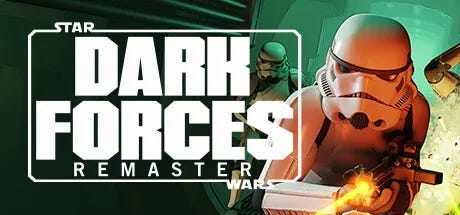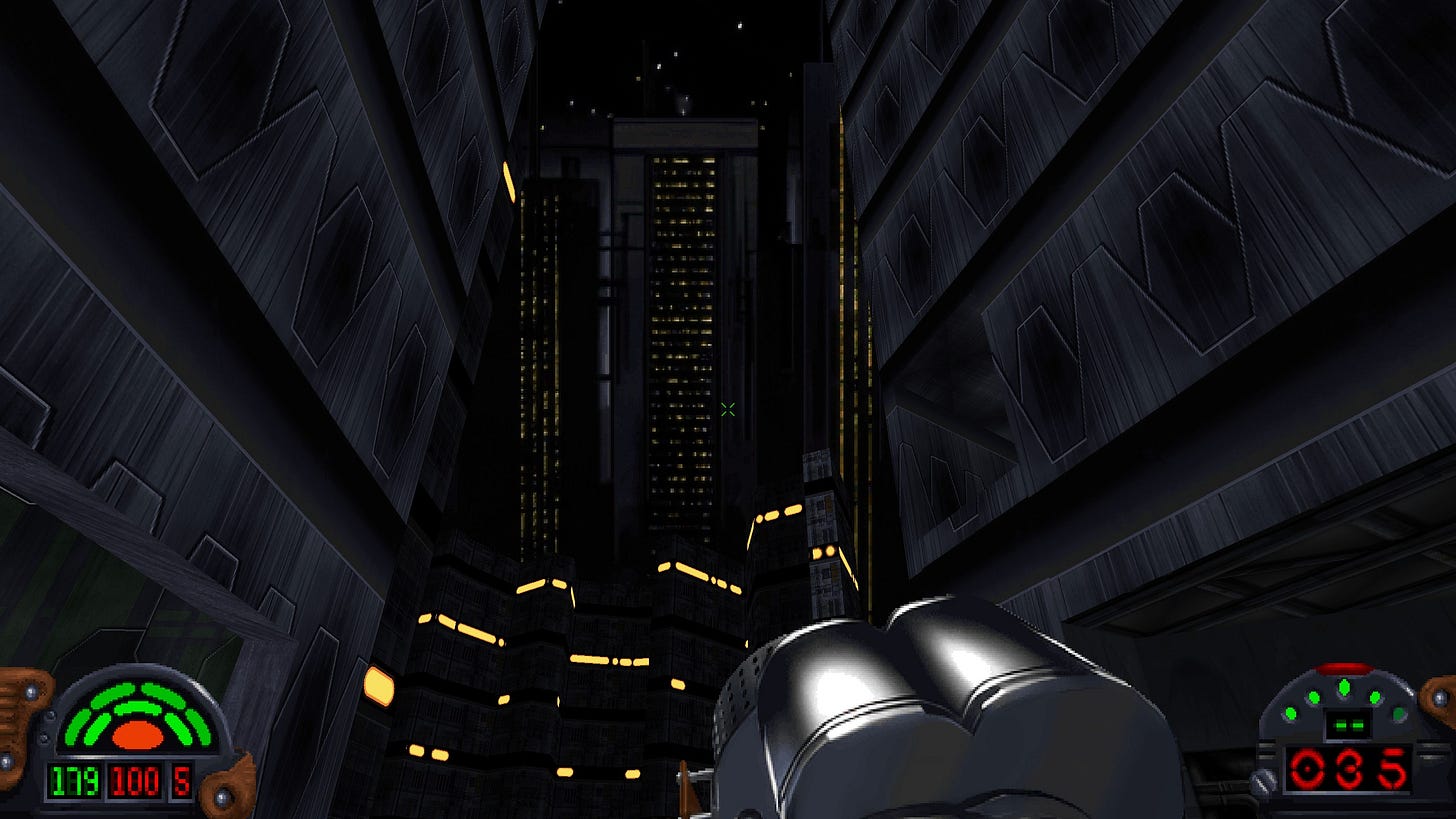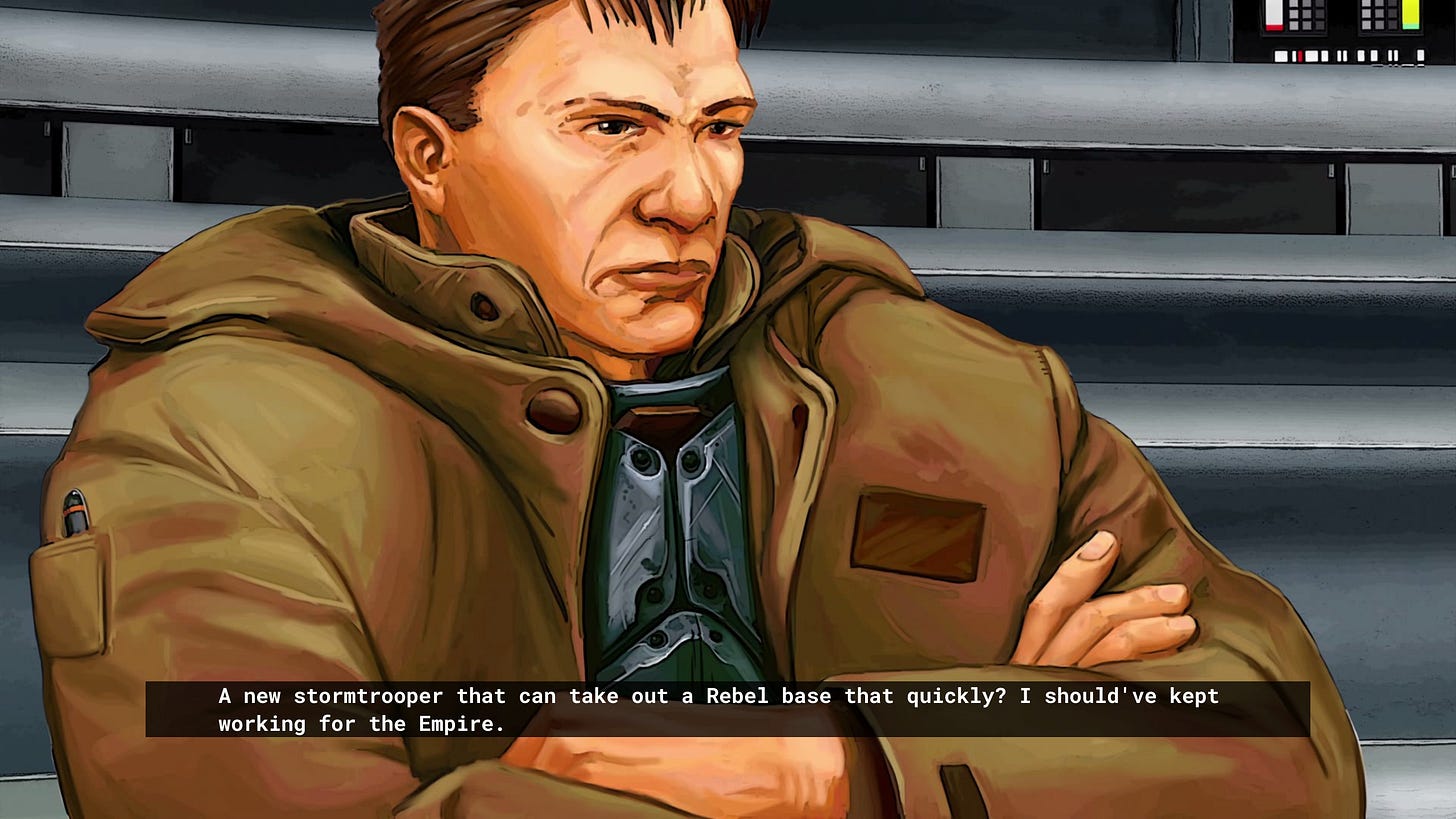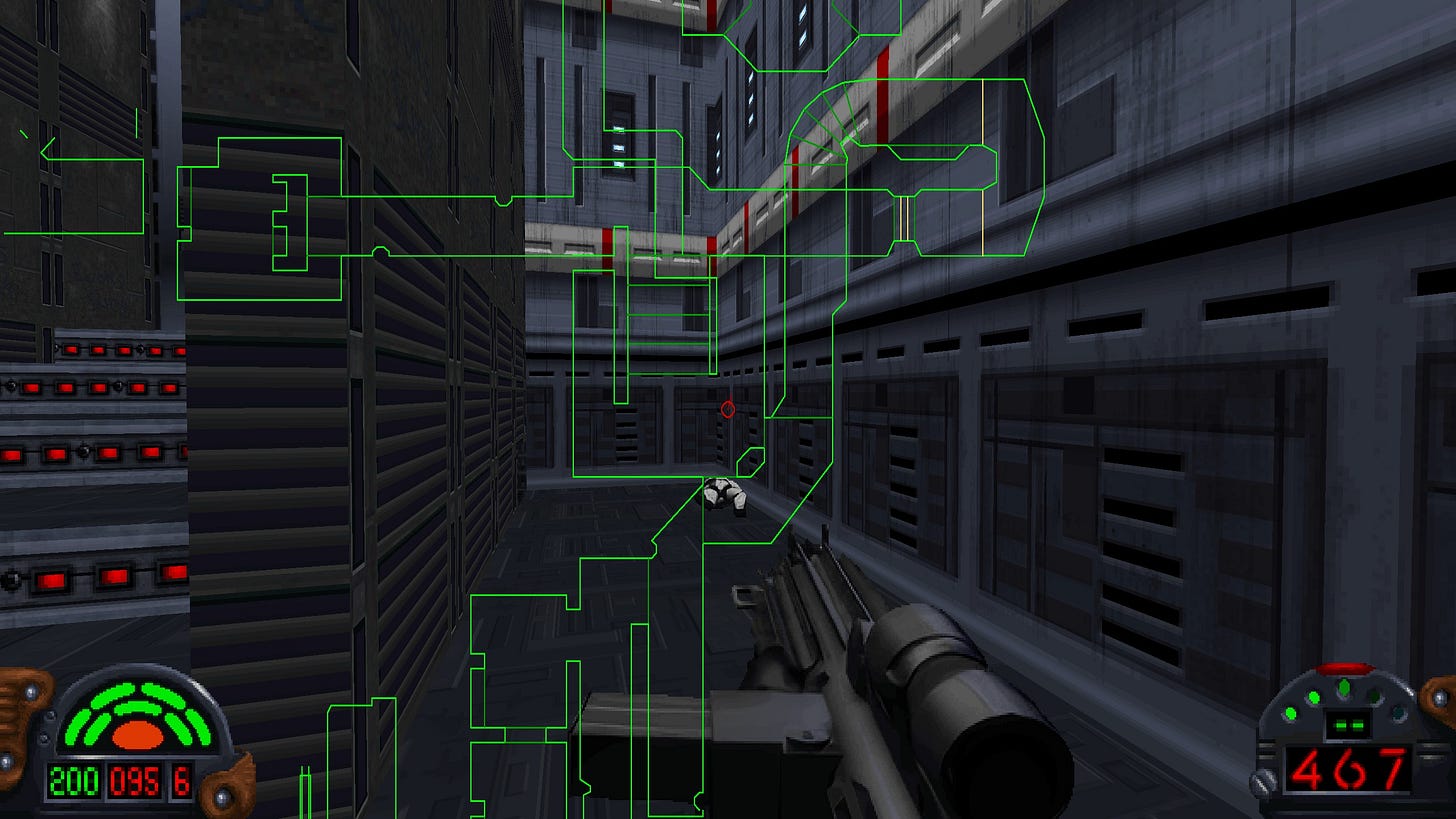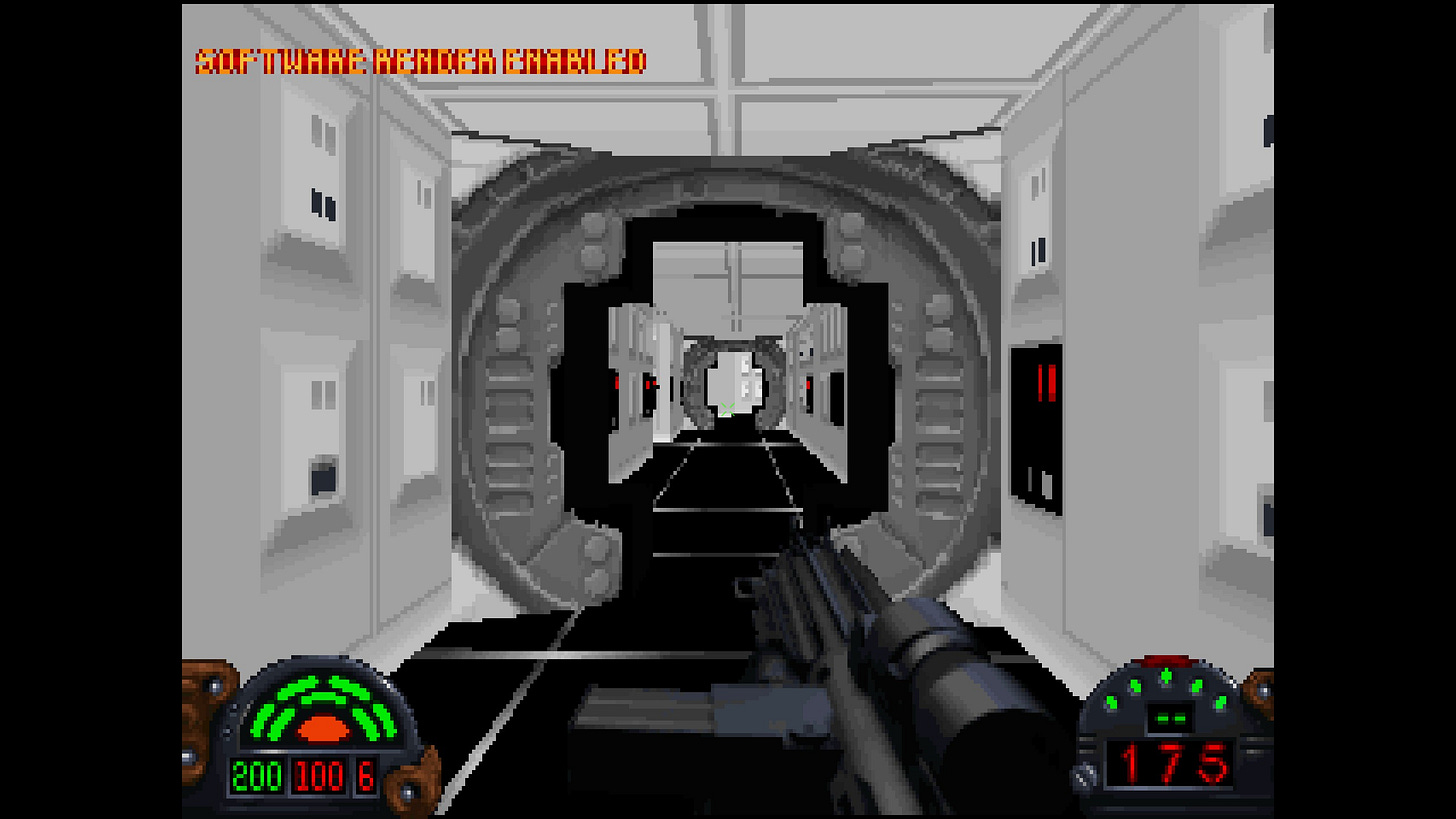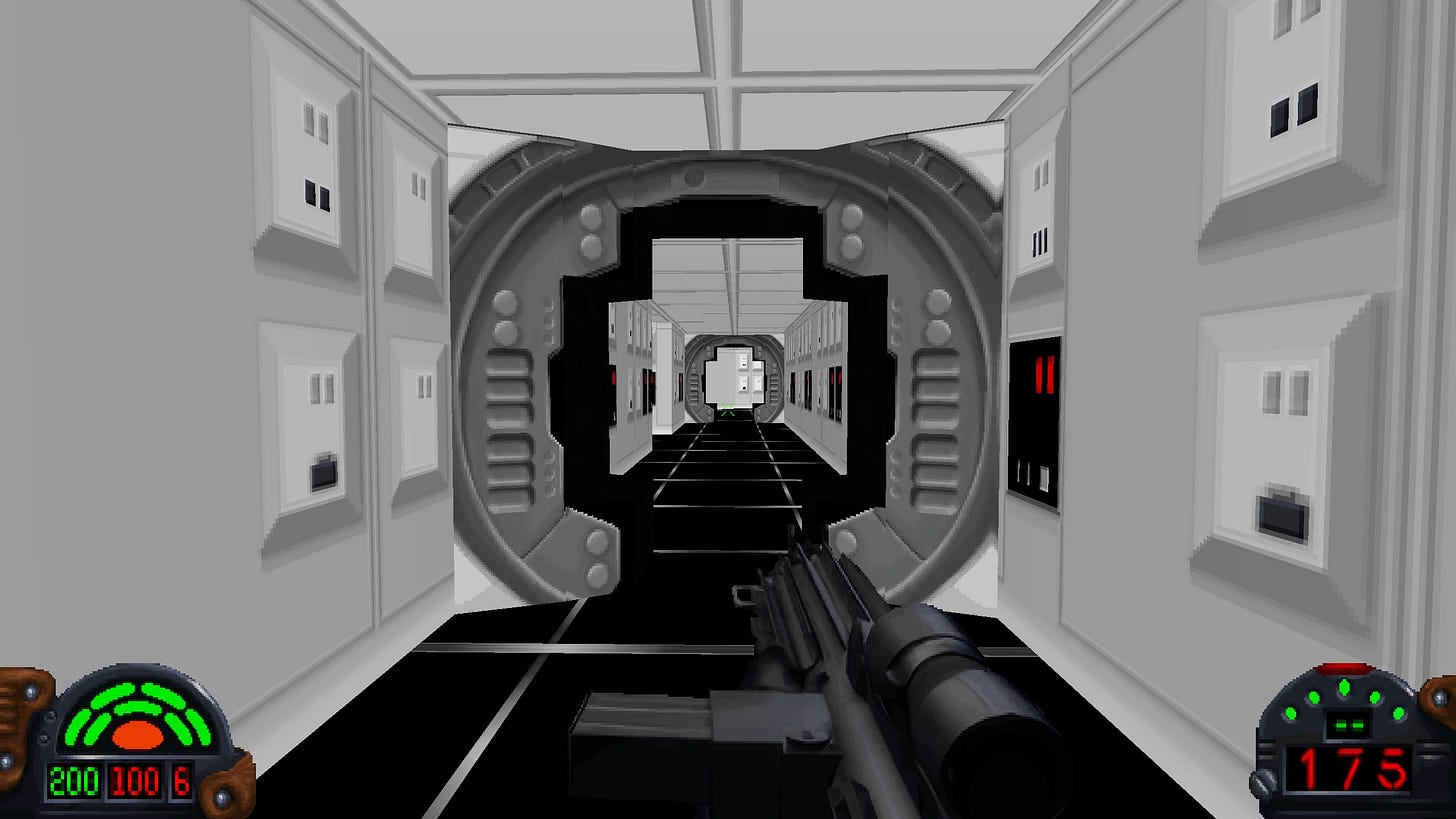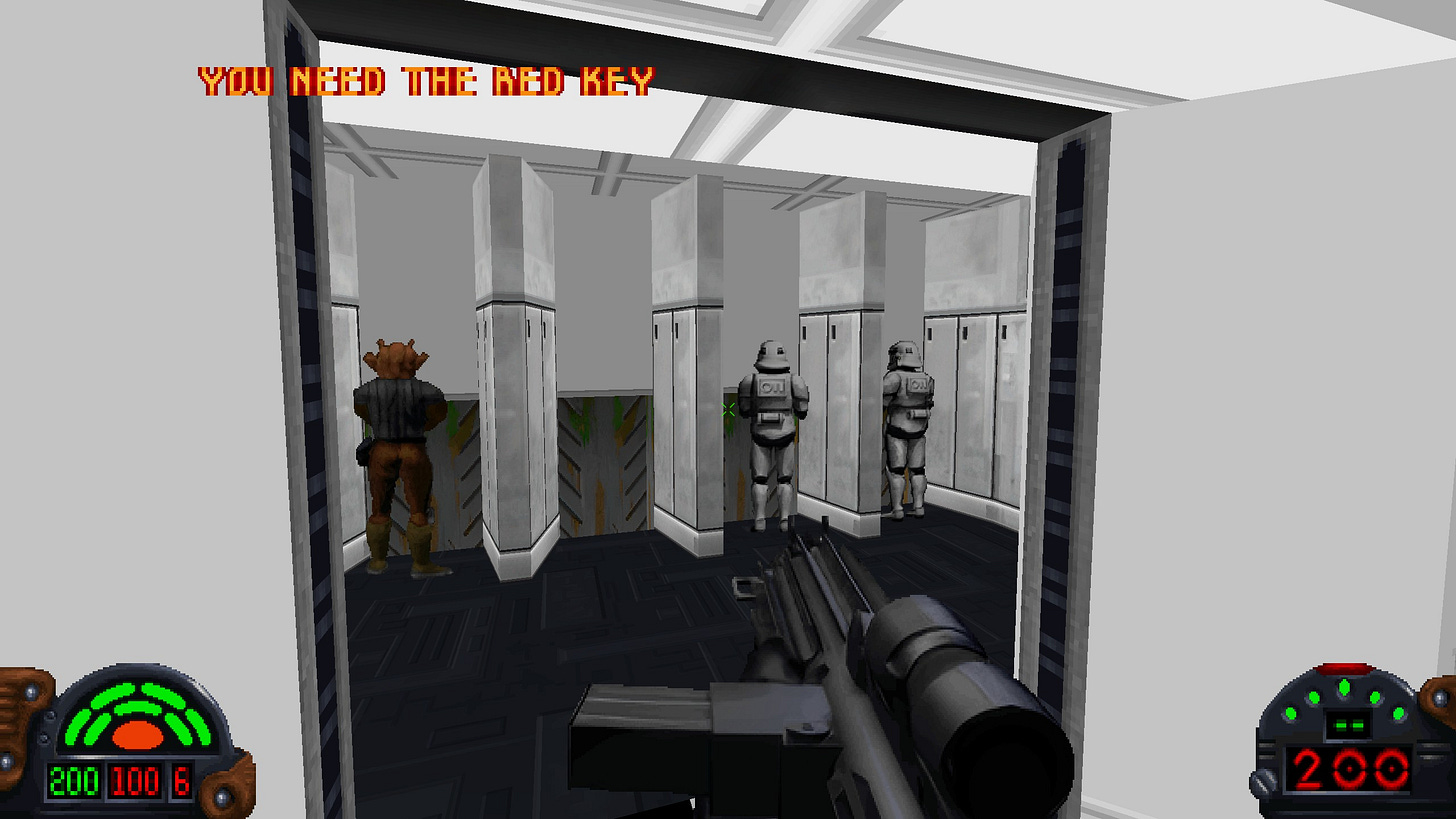Available on: Nintendo Switch, PC, PlayStation 4, PlayStation 5, Xbox One, Xbox Series X/S
Originally for: Macintosh, MS-DOS, PlayStation
Back in the early 90s, id Software forever changed the landscape of video games when they released DOOM, a game that didn’t invent the first-person shooter genre, but may as well have. Doom was incredibly popular, and many imitators, iterators, and successors would follow, like Duke Nukem 3D, Heretic, and Quake. Today, you can’t go five seconds without some studio announcing a new FPS, but back in 1995, the genre was still in its infancy. The studio behind classic adventure games like The Secret of Monkey Island and Star Wars titles like Rebel Assault — LucasArts — decided that they would try their hand at making their own first-person shooter, and the end result was Star Wars: Dark Forces. It’s a little dated today, but if you’re a fan of classic Doom it’s worth a play.
So, what is Dark Forces? Put simply, it’s a Doom, but it’s Star Wars! You play as Kyle Katarn, who faces off against familiar enemies like Stormtroopers and Imperial Officers as he completes mission objectives, all by his lonesome. Like Doom, you might need to collect a key card or two so you can open up more of the level. There’s a Star Wars aesthetic in full effect here; you’ll collect weapons like the Bryar Pistol and the Thermal Detonator, complete with familiar sound effects ripped straight out of the movies, all while listening to a crunchy, John Williams inspired soundtrack.
You might think, “OK, so it’s a 90s Doom clone, why don’t I just play Doom again instead?” Well, Dark Forces actually iterated on Doom in some absolutely mind-blowing ways: LucasArts gave the player the ability to look up and down, jump, and use elevators. Seriously! As quaint as features like vertical look and movement seem today, they weren’t common at the time. Doom actually only faked having multiple floors in its levels, and in a technical sense, each level had a single floorplan. Dark Forces would actually implement multiple floors in its level design, with many levels having elevators or cliffsides to climb. You can run through walkways underneath the floors above you, which again, while quaint by today’s standards, was crazy by 1995’s. Dark Forces isn’t a true 3D game, which is evident in the 2D facing sprites and the warping that occurs when looking up and down, but it made strides.
Dark Forces also had a proper story to tell, unlike Doom’s simple “you’ve gotta kill the demons.” There are cutscenes featuring foes like Darth Vader and heroes like Mon Mothma. There are mission briefings explaining your objectives that precede each level. The game opens with what is actually a very important yet never seen aspect of A New Hope’s story: the Rebel Alliance’s theft of the Death Star plans, over 21 years before Rogue One would retcon it with its own blueprint caper. After this opening, Kyle Katarn is asked by the Alliance for help yet again, this time to investigate rumors of a new type of Imperial soldier, which is what the bulk of the game concerns. The story as a whole isn’t crazy complicated or award worthy, but it’s serviceable enough for a 90s PC game and fun enough to play through.
But in the year 2025, how does the game hold up? Doom and DOOM II hold up very well, especially with the recent source ports that modernize the controls. Well, Dark Forces isn’t as good as Doom, but it’s still a competent shooter, and the Star Wars IP helps quite a bit in making this a fun experience. As much as I hate admitting it, I would consider myself a Star Wars fan, especially for the original trilogy, so running around Imperial bases with a stolen Stormtrooper rifle, gunning down Probe Droids and Gamorrean Guards, all while listening to Clint Bajakian’s awesome rendition of classic Star Wars tunes — it’s hard for me to dislike any of what’s going on here.
But Dark Forces is never self-indulgent in the fact that it’s a Star Wars game; it would’ve been so easy for LucasArts to say, “Hey, this is the level where you kill bad guys with Han Solo and Luke Skywalker!” and then at the end of the level, have Han wink to the camera as he says, “I’ll see you later, they need me at the new hideout… on Hoth.” The game shows a healthy amount of restraint in its use of familiar Star Wars characters, and their appearances never felt obnoxious. Instead, I thought it was exciting when a character I recognized from the big screen made a quick appearance. I’d like to gush about how cool it is when a certain villain shows up, but I’ll stay hush so you can see for yourself.
There is a criticism that I must levy at Dark Forces: it’s very easy to get lost. This happens to me in Doom sometimes, but it feels way worse in Dark Forces. If you’ve ever played Halo: CE, you might remember the mission “The Truth and Reconciliation,” the latter half of which takes place on a Covenant ship. The corridors on the ship exhibit a sameness that makes navigating it very challenging, and this is also an issue with many of the levels in Dark Forces. Levels are very boxy, many walls sharing the same texture. It makes everything blur together. The existence of the map helps, which can be overlaid on the screen with the press of a button, but I often found myself staring at the 2D dot representing Kyle instead of the 3D action right in front of me. I had to consult an old GameFAQs walkthrough more times than I’d hoped to, and I usually felt like an idiot when I realized the part I was stuck on wasn’t even a part I was supposed to be stuck on.
I haven’t mentioned it yet, but there is a Remaster out that brings the game to modern consoles and takes advantage of today’s PC hardware. It doesn’t do anything drastic to change the game, but it does add features like proper mouselook, a weapon wheel (I discovered this one on the final mission, whoops), support for higher resolutions and framerates, and hardware rendering — the original MS-DOS game only supported CPU rendering. You can also rebind your controls in-game, something you couldn’t do in the original release. I booted up the original version through DOSBox just to compare the two, and while you can a decent framerate and an OK resolution after messing with some configs, Remaster works great out of the box. The improvements it brings really help with modern playability.
But there is something to bring up, especially for PC users: the price. The remaster retails for $29.99, and a lot of work has gone into it, so while I understand the price point, the original MS-DOS version is still for sale on Steam for just $5.99. The remaster’s improvements are awesome, yes, but $6 vs. $30 is quite a difference, especially if you’re not absolutely dying to play the game. On top of that, free source ports like The Force Engine now exist, which include many of the enhancements that the Remaster has. If you’re a console gamer and want to play, then you just have to decide if $30 is an acceptable price or if you’d rather wait for a discount. If you’re on PC, you might have some more thinking to do.
Nearly 30 years later, Dark Forces is still a pretty fun game, one that was definitely overshadowed by its successors, at least in my age group. I didn’t even know Dark Forces existed until much later; I knew its sequel was subtitled “Dark Forces II", but somehow it never occurred to me there was a Dark Forces 1. Yes, it’s a bit dated today, but if you’re a fan of classic shooters from that era like Doom, and if you love the original Star Wars trilogy, Dark Forces is a good time. I’m kind of annoyed that Rogue One is canon and this isn’t, because I think Kyle Katarn is just a naturally cool character, even if he is a little basic. Give the game a try if you’re looking for something retro to play.

